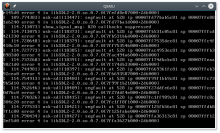According to T7771, what most users want is to try PlaMo out. Although Plasma Mobile cannot be installed on many handsets, and is not ready to be used as a substitute of what users run on their devices (and we must make this explicitly and abundantly clear every step of the way), we should provide a simple way for users to run what we can call a "preview" version of PlaMo on their desktops.
This would entail:
- Building an image for VirtualBox, qemu, etc. that can be run out of the box.
- Writing a simple step-by-step tutorial on how to run the image.
- Writing follow up articles on things to try.
- Writing a set of instructions on how to deliver feedback.
- Publicise everything to the world.
2, 3, and 4 above can also be (or be accompanied by) video tutorial.

